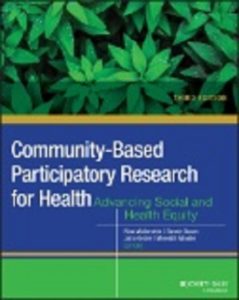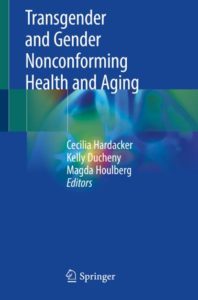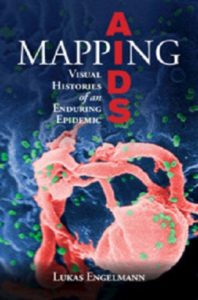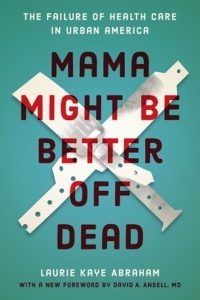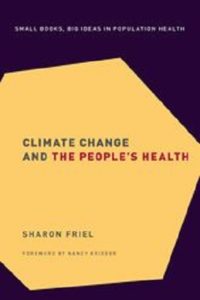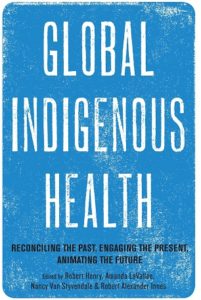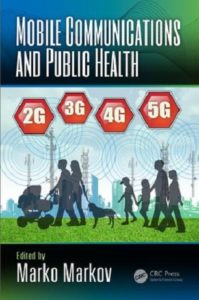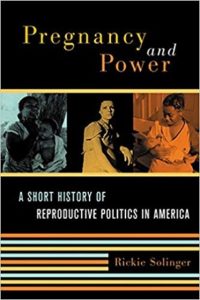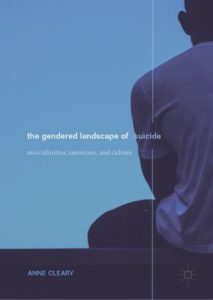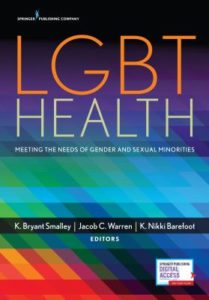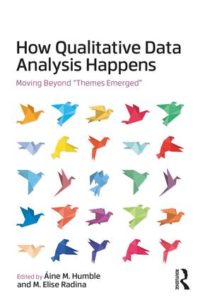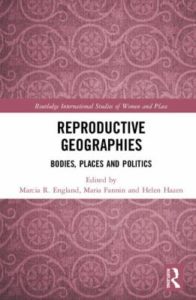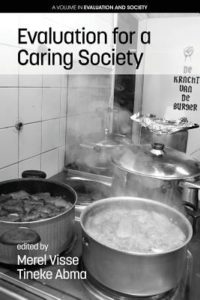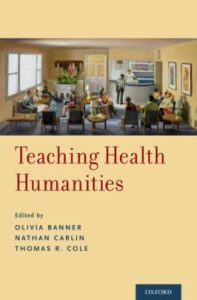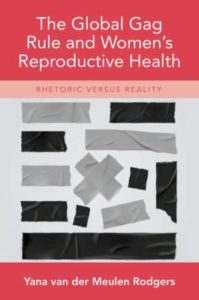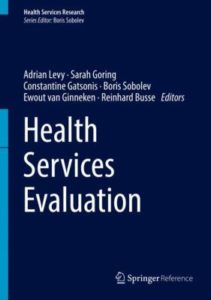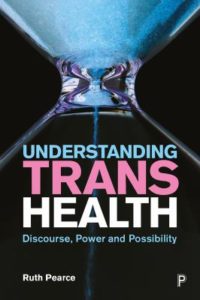Author: msholinb
2019 IgNobel Prize Winners Announced A While Ago
Hello,
Once again, we have the IgNobel prizes. Here’s a list of the 2019 winners; links to the actual, real research papers are here.
MEDICINE PRIZE [ITALY, THE NETHERLANDS]
Silvano Gallus, for collecting evidence that pizza might protect against illness and death, if the pizza is made and eaten in Italy.
MEDICAL EDUCATION PRIZE [USA]
Karen Pryor and Theresa McKeon, for using a simple animal-training technique— called “clicker training” —to train surgeons to perform orthopedic surgery.
BIOLOGY PRIZE [SINGAPORE, CHINA, GERMANY, AUSTRALIA, POLAND, USA, BULGARIA]
Ling-Jun Kong, Herbert Crepaz, Agnieszka Górecka, Aleksandra Urbanek, Rainer Dumke, and Tomasz Paterek, for discovering that dead magnetized cockroaches behave differently than living magnetized cockroaches.
ANATOMY PRIZE [FRANCE]
Roger Mieusset and Bourras Bengoudifa, for measuring scrotal temperature asymmetry in naked and clothed postmen in France.
CHEMISTRY PRIZE [JAPAN]
Shigeru Watanabe, Mineko Ohnishi, Kaori Imai, Eiji Kawano, and Seiji Igarashi, for estimating the total saliva volume produced per day by a typical five-year-old child
ENGINEERING PRIZE [IRAN]
Iman Farahbakhsh, for inventing a diaper-changing machine for use on human infants.
ECONOMICS PRIZE [TURKEY, THE NETHERLANDS, GERMANY]
Habip Gedik, Timothy A. Voss, and Andreas Voss, for testing which country’s paper money is best at transmitting dangerous bacteria.
PEACE PRIZE [UK, SAUDI ARABIA, SINGAPORE, USA]
Ghada A. bin Saif, Alexandru Papoiu, Liliana Banari, Francis McGlone, Shawn G. Kwatra, Yiong-Huak Chan, and Gil Yosipovitch, for trying to measure the pleasurability of scratching an itch.
PSYCHOLOGY PRIZE [GERMANY]
Fritz Strack, for discovering that holding a pen in one’s mouth makes one smile, which makes one happier — and for then discovering that it does not.
PHYSICS PRIZE [USA, TAIWAN, AUSTRALIA, NEW ZEALAND, SWEDEN, UK]
Patricia Yang, Alexander Lee, Miles Chan, Alynn Martin, Ashley Edwards, Scott Carver, and David Hu, for studying how, and why, wombats make cube-shaped poo.
Newly Acquired Public Health Books
Here is a sample of new Public Health books — many more may be found on our New Public Health Books web guide. Click the links below for library location. And, happy reading!
Community-based participatory research for health: advancing social and health equity
Transgender and gender nonconforming health and aging
Mapping AIDS : visual histories of an enduring epidemic
Mama might be better off dead: the failure of health care in urban America
Climate change and the people’s health
Global Indigenous Health: Reconciling the Past, Engaging the Present, Animating the Future
Mobile communications and public health
Pregnancy and power: a history of reproductive politics in the United States
The gendered landscape of suicide: masculinities, emotions, and cultures
New Public Health Books
Here is a sample of new Public Health books — many more may be found on our New Public Health Books web guide. Click the links for location: most are at the Bioscience, Natural Resources & Public Health Library; some are at other UCB libraries, or online.
LGBT Health: Meeting the Needs of Gender and Sexual Minorities
How Qualitative Data Analysis Happens: Moving Beyond “Themes Emerged”
Reproductive Geographies: bodies, places and politics
Evaluation for a Caring Society
Teaching Health Humanities
Emerging Micro-Pollutants in the Environment: occurrence, fate, and distribution
The Global Gag Rule and Women’s Reproductive Health: Rhetoric versus reality
Health Services Evaluation
Understanding Trans Health: Discourse, power and possibility
2018 Winners of the Ig® Nobel Prize Announced!!
…For achievements that first make people LAUGH then make them THINK
MEDICINE PRIZE [USA] — Marc Mitchell and David Wartinger, for using roller coaster rides to try to hasten the passage of kidney stones.
REFERENCE: “Validation of a Functional Pyelocalyceal Renal Model for the Evaluation of Renal Calculi Passage While Riding a Roller Coaster,” Marc A. Mitchell, David D. Wartinger, The Journal of the American Osteopathic Association, vol. 116, October 2016, pp. 647-652.
ANTHROPOLOGY PRIZE [SWEDEN, ROMANIA, DENMARK, THE NETHERLANDS, GERMANY, UK, INDONESIA, ITALY] — Tomas Persson, Gabriela-Alina Sauciuc, and Elainie Madsen, for collecting evidence, in a zoo, that chimpanzees imitate humans about as often, and about as well, as humans imitate chimpanzees.
REFERENCE: “Spontaneous Cross-Species Imitation in Interaction Between Chimpanzees and Zoo Visitors,” Tomas Persson, Gabriela-Alina Sauciuc, and Elainie Madsen, Primates, vol. 59, no. 1, January 2018, pp 19–29.
BIOLOGY PRIZE [SWEDEN, COLOMBIA, GERMANY, FRANCE, SWITZERLAND] — Paul Becher, Sebastien Lebreton, Erika Wallin, Erik Hedenstrom, Felipe Borrero-Echeverry, Marie Bengtsson, Volker Jorger, and Peter Witzgall, for demonstrating that wine experts can reliably identify, by smell, the presence of a single fly in a glass of wine.
REFERENCE: “The Scent of the Fly,” Paul G. Becher, Sebastien Lebreton, Erika A. Wallin, Erik Hedenstrom, Felipe Borrero-Echeverry, Marie Bengtsson, Volker Jorger, and Peter Witzgall, bioRxiv, no. 20637, 2017.
CHEMISTRY PRIZE [PORTUGAL] — Paula Romão, Adília Alarcão and the late César Viana, for measuring the degree to which human saliva is a good cleaning agent for dirty surfaces.
REFERENCE: “Human Saliva as a Cleaning Agent for Dirty Surfaces,” by Paula M. S. Romão, Adília M. Alarcão and César A.N. Viana, Studies in Conservation, vol. 35, 1990, pp. 153-155.
MEDICAL EDUCATION PRIZE [JAPAN] — Akira Horiuchi, for the medical report “Colonoscopy in the Sitting Position: Lessons Learned From Self-Colonoscopy.”
REFERENCE: “Colonoscopy in the Sitting Position: Lessons Learned From Self-Colonoscopy by Using a Small-Caliber, Variable-Stiffness Colonoscope,” Akira Horiuchi and Yoshiko Nakayama, Gastrointestinal Endoscopy, vol. 63, No. 1, 2006, pp. 119-20.
LITERATURE PRIZE [AUSTRALIA, EL SALVADOR, UK] — Thea Blackler, Rafael Gomez, Vesna Popovic and M. Helen Thompson, for documenting that most people who use complicated products do not read the instruction manual.
REFERENCE: “Life Is Too Short to RTFM: How Users Relate to Documentation and Excess Features in Consumer Products,” Alethea L. Blackler, Rafael Gomez, Vesna Popovic and M. Helen Thompson, Interacting With Computers, vol. 28, no. 1, 2014, pp. 27-46.
NUTRITION PRIZE [ZIMBABWE, TANZANIA, UK] — James Cole, for calculating that the caloric intake from a human-cannibalism diet is significantly lower than the caloric intake from most other traditional meat diets.
REFERENCE: “Assessing the Calorific Significance of Episodes of Human Cannibalism in the Paleolithic,” James Cole, Scientific Reports, vol. 7, no. 44707, April 7, 2017.
PEACE PRIZE [SPAIN, COLOMBIA] — Francisco Alonso, Cristina Esteban, Andrea Serge, Maria-Luisa Ballestar, Jaime Sanmartín, Constanza Calatayud, and Beatriz Alamar, for measuring the frequency, motivation, and effects of shouting and cursing while driving an automobile.
REFERENCE: “Shouting and Cursing While Driving: Frequency, Reasons, Perceived Risk and Punishment,” Francisco Alonso, Cristina Esteban, Andrea Serge and Maria-Luisa Ballestar, Journal of Sociology and Anthropology, vol. 1, no. 12017, pp. 1-7.
REFERENCE: “La Justicia en el Tráfico: Conocimiento y Valoración de la Población Española” [“Justice in Traffic: Knowledge and Valuation of the Spanish Population”)], F. Alonso, J. Sanmartín, C. Calatayud, C. Esteban, B. Alamar, and M. L. Ballestar, Cuadernos de Reflexión Attitudes, 2005.
REPRODUCTIVE MEDICINE PRIZE [USA, JAPAN, SAUDI ARABIA, EGYPT, INDIA, BANGLADESH] — John Barry, Bruce Blank, and Michel Boileau, for using postage stamps to test whether the male sexual organ is functioning properly—as described in their study “Nocturnal Penile Tumescence Monitoring With Stamps.”
REFERENCE: “Nocturnal Penile Tumescence Monitoring With Stamps,” John M. Barry, Bruce Blank, Michael Boileau, Urology, vol. 15, 1980, pp. 171-172.
ECONOMICS PRIZE [CANADA, CHINA, SINGAPORE, USA] — Lindie Hanyu Liang, Douglas Brown, Huiwen Lian, Samuel Hanig, D. Lance Ferris, and Lisa Keeping, for investigating whether it is effective for employees to use Voodoo dolls to retaliate against abusive bosses.
REFERENCE: “Righting a Wrong: Retaliation on a Voodoo Doll Symbolizing an Abusive Supervisor Restores Justice,” Lindie Hanyu Liang, Douglas J. Brown, Huiwen Lian, Samuel Hanig, D. Lance Ferris, and Lisa M. Keeping, The Leadership Quarterly, February 2018.
As always, winners from previous years, as well as all kinds of stuff, may be found on the Improbable Research website.
CDPH In The News June, 2018: Final Issue
CDPH in the News
Navy Finds More Radiation Data Falsification at Hunters Point
from NBC Bay Area
Internal emails from the California Department of Public Health uncovered by the NBC Bay Area Investigative Unit through a public records request in 2015 show regulators, including the Navy, had concerns that radiological scans on 22 buildings at Hunters Point “were collected too fast.” As a result, the California Department of Public Health suspended the release recommendations for those 22 buildings. A release recommendation indicates any radiation that may have existed on a site has been cleaned up, doesn’t pose a health threat and can be turned over for redevelopment.
Deaths from fentanyl surge to record in California
from San Francisco Chronicle
According to the California Department of Public Health, 373 people died from fentanyl overdoses last year. That is more than the number who died from fentanyl overdoses in 2016, and more than four times the 81 who died from overdosing on the drug in 2013. It is the highest number of fentanyl-related deaths the state has seen since public health officials began tracking the numbers in 2008.
State Agency Criticized for Failing to Protect Highest At-Risk Communities
from Beyond Pesticides
California’s Department of Pesticide Regulation (DPR) is falling short of protecting vulnerable communities in the state, especially low-income and communities of color. This, according to a new report by California Environmental Justice Alliance (CEJA), which assesses state agencies on eight environmental justice principles. The poor showing by DPR comes at the forefront of reports that the state’s pesticide use has increased, nearing record highs.
CEJA’s assessment is the only one in the nation to evaluate state agencies based on the impact of their environmental policies on low-income communities and communities of color. This is critical as the California Department of Public Health finds that Latino schoolchildren are almost twice as likely as their white peers to attend schools in the top quartile for nearby pesticide use, but DPR’s regulations do not address the racial disparity in exposure.
State declares ‘immediate jeopardy’ at UC San Diego hospital over dirty surgical instruments
from Becker’s
California health officials declared “immediate jeopardy” at UC San Diego Health-Hillcrest in March for at least the eighth time after officials discovered issues with how surgical equipment was cleaned. The deficiencies were discovered during the California Department of Public Health’s routine compliance check at the hospital in March. Officials placed the hospital in “immediate jeopardy,” which indicates a hospital’s errors have caused or are likely to cause serious injury or death to patients. The designation was lifted 24 hours after it was initiated.
California Moving to Boost Lead Poisoning Prevention Programs for At-Risk Kids
from EWG News
An estimated half to three-fourths of lower-income young children in California don’t get the lead poisoning tests required by state and federal law. In response, state lawmakers are taking steps to strengthen the state’s childhood lead poisoning prevention efforts.
In January, an EWG analysis of state data found that between 2012 and 2016, almost three-fourths of California toddlers enrolled in Medi-Cal were not tested for lead in their blood. Our estimate was later reinforced by the state Department of Health Care Services, or DHCS, which reported that on average, each year 28 percent of the state’s toddlers are tested. Now, DHCS and the California Department of Public Health, or DPH, have released an analysis combining and matching the two agencies’ test data. The combined analysis found that in 2015, about 49 percent of 1- to 2-year-olds on Medi-Cal were tested, and about 41 percent of 2- to 3-year-olds were tested.
CDPH In The News May, 2018
CDPH in the News
Study links wildfire smoke to heart attacks
from VC Star
Smoke exposure from massive wildfires may ramp up the risk of heart attacks, heart failure and coronary disease, according to a new study.
Researchers from UC San Francisco, the California Department of Public Health and the U.S. Environmental Protection Agency reviewed more than 1 million emergency room visits in eight different California air basins in 2015.
Supe Calls For Investigation Of Possible Radioactive Materials At Keller Canyon Landfill
from SF Gate
Contra Costa County Supervisor Federal Glover is calling for an investigation of allegations that radioactive materials from San Francisco might have been deposited at Keller Canyon Landfill, Glover said Thursday.
Pasadena-based Tetra Tech EC Inc. is alleged to have falsified data in the cleanup of radioactive soil at Hunters Point Naval Shipyard in San Francisco. Contaminated soil may have been deposited at California landfills including Keller Canyon on Bailey Road in unincorporated Contra Costa County near Pittsburg. Tetra Tech first began cleaning up radiation at the former Hunters Point Naval Shipyard in 2002. The area had been slated for redevelopment and was divided up into parcels.
In December, the U.S. Environmental Protection Agency, along with the California Department of Toxic Substances Control and the California Department of Public Health, independently reviewed the Navy’s report and found further signs of potential falsification, manipulation and data quality concerns at the parcels.
Contra Costa County sues drug companies over opioid epidemic
from Mercury News
Contra Costa County is among 30 California counties suing pharmaceutical manufacturers and distributors for their role in creating a widespread opioid epidemic.
The lawsuit filed by Contra Costa County seeks reimbursement of taxpayer funds that have been spent responding to the opioid epidemic in the county and for ongoing costs, such as emergency response for overdoses, prevention, monitoring and treatment.
The lawsuit filed by Contra Costa County claims the opioid epidemic “is particularly devastating” in the county. Citing information from the California Department of Public Health, the lawsuit says that in 2016, Contra Costa County suffered 53 deaths from opioids, up from 49 in 2015. In 2014, 50 people died from opioid overdoses and 42 people died in 2013.
In 2016, 126 people visited the emergency department due to opioid overdoses, excluding heroin, according to the California Department of Public Health, and 113 people were hospitalized.
DNA of every baby born in California is stored. Who has access to it?
from CBS News
You probably know where your Social Security card, birth certificate and other sensitive information is being stored, but what about your genetic material? If you or your child was born in California after 1983, your DNA is likely being stored by the government, may be available to law enforcement and may even be in the hands of outside researchers, CBS San Francisco’s Julie Watts reports.
Like many states, California collects bio-samples from every child born in the state. The material is then stored indefinitely in a state-run biobank, where it may be purchased for outside research.
It all begins with a crucial and potentially lifesaving blood test. The California Department of Public Health reports that from 2015-2017 alone, the Newborn Screening test diagnosed 2,498 babies with a “serious congenital disorder that, if left untreated could have caused irreparable harm or death.”
But researchers with the California Genetic Disease Screening Program aren’t the only ones with access to samples stored in the biobank.
AHF Blasts California Senate for Nixing $10M for STD Control as Rates Explode in State
from Businesswire
Within 96 hours of the Monday release of a blistering report by the California Department of Public Health showing record rates of STDs in the state, the California Senate Budget Subcommittee on Health today rejected a request from AHF and Essential Access Health for a $10 million increase in the STD control budget at the Department of Public Health.
Chlamydia cases in California are up 9% in 2017; gonorrhea up 16%; and syphilis, up 20%. AHF singles out Senator Richard Pan, who chairs the Senate Budget Subcommittee on Health, for particularly harsh criticism for his shortsightedness.
“The same week the State of California was embarrassed worldwide for its record STD rates, news that was widely reported around the globe, the California Senate shows how completely tone deaf it is and how deeply the members have their heads in the sand,” said AHF [AIDS Healthcare Foundation] President Michael Weinstein.
CDPH In The News April, 2018
CDPH in the News
Battery Blood: How California Health Agencies Failed Exide Workers
from Capital & Main
For nearly a century a hulking industrial plant near downtown Los Angeles melted down car batteries to reclaim their lead. The facility, most recently owned by Exide Technologies, was shut down in 2015 in a deal the company made with the U.S. Justice Department to avoid criminal prosecution for polluting nearby residential communities. Neighborhood activists have criticized California’s Department of Toxic Substances, which allowed Exide to continue operating for years with a temporary permit, despite evidence it was a major polluter. But a year-long investigation by Capital & Main and the University of Southern California’s Center for Health Journalism has found that two other agencies, the California Department of Public Health and the Division of Occupational Safety and Health, failed to take action during a simmering public health crisis involving hundreds of lead-poisoned workers at the plant.
This Video Shows What It’s Really Like When a Tick Latches Onto Your Skin
from Cosmopolitan
One of the many unsolved mysteries of nature is this: why can’t you just flick a tick when it grabs onto your skin? If you’ve ever wondered this, here’s your chance to learn a little somethin’ somethin’.
Apparently, a tick’s mouth is designed to be a bunch of little hooks that work together to ensure it can stay latched onto your skin for DAYS at a time. “Ticks have a lovely, evolved mouth part for doing exactly what they need to do, which is extended feeding,” supervising public health biologist at the California Department of Public Health in Richmond Kerry Padgett told NPR. “They’re not like a mosquito that can just put their mouth parts in and out nicely, like a hypodermic needle.”
Gambling prevention group seeks to expand services in SF’s Chinese community
from SF Examiner
When Michael Liao began an internship focused on gambling prevention with The City’s NICOS Chinese Health Coalition in 2005, he was unaware that some 6,500 miles away, his stepfather was struggling with a crippling gambling addiction in his home country of Taiwan.
“It’s ironic because I was learning about the issue and [working] to prevent it from happening to other families, not knowing that there was an issue in my family,” said Liao, now the director of programs at NICOS, a public-private community partnership of more than 30 organizations working to enhance the health and well-being of San Francisco’s Chinese community.
“The younger you start, the more likely and severe addiction is later on,” said Liao.
Aside from creating financial hardships for families in San Francisco’s Chinese community, gambling addiction has contributed to domestic violence and higher rates of divorce. Woo estimates that up to 50 percent of Chinese households exposed to gambling addiction have also experienced domestic violence.
The Office of Problem Gambling, a division of the California Department of Public Health, estimates that gambling affects about 3.7 percent of the states’ populations, or just over one million individuals.
ADA advances national policy to reduce opioid dependency
from California Dental Association
The ADA has adopted a new policy to combat the opioid epidemic, calling it the potential first of its kind by a major health professional organization to support mandates on opioid prescription limits and continuing education.
The major studies cited today say dentists write 11 to 12 percent of immediate-release prescription opioids annually in the U.S. Perhaps more critically, oral surgeons write the majority of opioid prescriptions to patients who are in a particularly vulnerable age range: the 10- to 19-year-olds. Opioid overdoses account for more than 1,900 deaths in California in 2016, according to California Department of Public Health data. The ADA cites 42,000 opioid-related deaths nationwide in 2016 — the highest of any year on record — with 40 percent of those involving a prescription pain reliever.
USGS maps changes to beach, seafloor after Montecito Mudslides
from VC Reporter
Driving northbound on the 101 Freeway from Ventura is a far different experience now than it was prior to Jan. 9, when a storm rolled through, mud slid from the hillsides, and 21 lives were lost. The days following the event forced closure of the freeway, and images of the path of destruction that tore through Montecito and parts of Santa Barbara County made international headlines. The damage can still be seen as residents continue working to return to normal.
Now, the U.S. Geological Survey is mapping changes to the beach and seafloor adjacent to the Montecito mudslides, including in their survey an area that stretches from Goleta to the beach at Mandalay Bay in Oxnard, in an effort to better understand long-term coastal changes. With these data, both Santa Barbara and Ventura Counties can better plan for future coastal living. These data are provided to county planning divisions, who use them to determine coastal planning for the long term. Climate change models show that California may see up to a 66-inch rise in sea level during this century, according to a report released by the California Department of Public Health in 2017.
Gala Pharmaceutical to Launch Its First State-Of-The-Art Cannabis Testing Laboratories
from Globe Newswire
Gala Pharmaceutical, Inc. (OTCBB:GLPH), an emerging cannabis cloning and breeding company, today announced that it expects to build its first state-of-the-art testing laboratory that will fulfill the new ISO requirements set by the City of Long Beach and the State of California in accordance with the Medical Marijuana Regulation and Safety Act. The Act will require the California Department of Public Health to enforce its provisions related to the manufacturing and testing of medical cannabis across the State.
CDPH In The News March, 2018
CDPH in the News
Jury awards family $12.39M in punitive damages in case of doctor who left before finishing operation
from ABC30.com
A jury has awarded a family another $12.39-million in punitive damages in case of Fresno doctor who walked out before the operation was complete. A jury awarded the family $55.6 million in general damages Monday. Silvino Perez went into Community Regional Medical Center in Downtown Fresno needing heart surgery in 2012 and he never really came out.
Six years later, he hasn’t woken up.
Investigators say the surgeon, Dr. Pervaiz Chaudhry, left before finishing the operation by closing the 70-year-old’s chest. Months later, the California Department of Public Health fined the hospital $175,000 without naming the patient. CRMC reached a settlement with Perez’s family before this trial, but still faces at least five more lawsuits related to Dr. Chaudhry’s performance and one more from the whistleblower.
Second lawsuit against San Francisco fertility center after tank malfunction
from Mercury News
A second lawsuit has been filed against a San Francisco fertility center by a Sacramento couple that says their frozen embryos were destroyed by a rare tank malfunction, dashing their hopes of starting a family. Megan and Jonathan Bauer’s lawsuit says they were planning to transfer one of their eight embryos stored at Pacific Fertility Center next month — and were shocked to be told that something went wrong.
“Their dreams of future children were irrevocably destroyed,” said attorney Adam Wolf of the firm Peiffer Rosca Wolf Abdullah Carr & Kane, which filed the suit Thursday in U.S. District Court, Northern District of California, San Francisco Division. “They entrusted their eggs and embryos after exhausting other avenues to have children.” The law firm said it is also working with regulators and legislators to create tougher oversight of the lightly-regulated field.
The U.S. Food and Drug Administration requires testing to prevent the spread of infectious disease. The U.S. Centers for Disease Control tracks the success of treatments. California’s Department of Public Health requires that clinics submit policies to obtain a license.
California nursing home compare website needs to go, advocates say
from McKnight’s Long Term care News
A new website in the state of California is supposed to make it easier for residents to compare nursing homes. But industry advocates say it’s doing more harm than good and should be taken down immediately, California Healthline reports. The site in question is Cal Health Find, launched by the state’s Department of Public Health earlier this year, as a way to compare nursing homes and other care facilities. State activists, however, are calling the effort “incomplete, inaccurate and a huge step in the wrong direction.”
“The department has acknowledged and identified the source of the problem [with complaint counts] and has already implemented a correction plan,” Corey Egel, spokesman for the California Department of Public Health, told Healthline in a written statement. “The department believes Cal Health Find improves the user experience. … We find no reason to remove the site while we correct errors.”
Eureka City Ordinance set to lower syringe litter
from KIEM TV
One of the major issues affecting our community is the amount of syringes spread across private and public property. Now a new Eureka City Ordinance aims to regulate the problem at the source. There are more syringes on the ground then there are people to pick them up, but that doesn’t stop police and volunteers from trying. People who inject drugs continue to be at risk for HIV and hepatitis C infection. The California Department of Public Health has lowered the number at risk by implementing the syringe exchange program in most medical facilities, but as a result more syringes are being left behind.
City Manager Greg Sparks said that treatment for everyone in need is the real source of change, but until then, the draft ordinance provides a number of criteria including quarterly reporting, clean-ups, and keeping syringes away from schools. The new ordinance will be addressed at the next council meeting Tuesday the 6th it begins at six in eureka city hall’s council chambers.
At Some California Hospitals, Fewer Than Half Of Workers Get The Flu Shot
from Kaiser Health News
How well are doctors, nurses and other workers at your local hospital vaccinated against the flu? That depends on the hospital.
According to data from the California Department of Public Health, flu vaccination rates among health care staffers at the state’s acute care hospitals range from a low of 37 percent to 100 percent. Overall, flu vaccination rates among hospital workers climbed significantly in the past several years — from an average of 63 percent during the 2010-11 influenza season to 83 percent during the 2016-17 season, according to the California Department of Public Health.
California considers using budget surplus to aid homeless
from Santa Cruz Sentinal
Responding to pleas from 11 big-city mayors grappling with the alarming rise of homelessness, California lawmakers on Wednesday announced two proposals that would devote over half of the state’s $6.1 billion budget surplus to the crisis.
One longtime advocate for the homeless said the crisis is as severe as he has ever seen it. “It’s obviously causing individuals a lot of pain,” said Louis Chicoine, CEO of the Alameda County-based Abode Services, “but it’s also affecting the quality of life in the Bay Area for everyone else.” San Diego was struck by a deadly Hepatitis A outbreak in its homeless encampments last fall that killed 20 people, according to the California Department of Public Health. Los Angeles, Monterey and Santa Cruz also have had cases, including one death in Santa Cruz.
CDPH In The News, February 2018
CDPH in the News
How California plans to track commercial cannabis
from Bakersfield Noq
The California Department of Food and Agriculture, Bureau of Cannabis Control, and the California Department of Public Health offered a workshop Monday in Bakersfield about how commercial marijuana will be tracked. The state is using a track-and-trace system called Metrc. It’s a large database that will be used to record the inventory and movement of cannabis from cultivation to sale. All state cannabis licensees will need to use Metrc to be in compliance with state regulations.
Local company launches device to protect kids from cell phone radiation
from WZZM13
The potential dangers of cell phone use is making headlines these days. A West Michigan company has created a device, it says will block harmful radiation. The company is called Kids Armour. President and CEO, Ross Pope, believes the microchip technology is a must have, especially for parents. “Cell phones collect a signal from a cell tower. The energy that it generates, creates radiation similar to that of radiation from transformers in neighborhoods, that we know cause cancer,” said Pope. “This is the same type of radiation that is affecting your body or children’s bodies.”
It has been debated, for years, whether or not that radiation poses any real health risks. Pope says research suggests it does. Just last month, The California Department of Public Health cautioned people to decrease their exposure to cell phones of possible cancer risks and other health issues.
Fighting SCV’s opioid crisis one step at a time
from The Signal
About 60 people showed up Thursday night to hear about the opioid crisis and, specifically, about “seeking solutions for pain relief.” While they didn’t find the solution Thursday to the national crisis, the panel took steps in that direction simply by talking about it. The opportunity to address both the nationwide opioid epidemic and pain management was afforded by the people who held the workshop, those at the Valencia Public Library who offered a place to meet and those with Quest Toastmasters who sparked the discussion.
The nationwide opioid crisis became a local issue in April 2017, when at least seven people showed up in the emergency room of Henry Mayo Newhall Hospital with overdoses of opiates. The latest statistics released by the California Department of Public Health show a sharp upturn in the number of heroin overdose deaths across the state since 2012.
Cactus Pads With High Pesticide Levels Removed From San Francisco Grocery Store
from NBC Bay Area
Cactus pads imported from Mexico may contain pesticides that pose a health risk to consumers, the California Department of Public Health (CDPH) warned Wednesday. Samples of the vegetable, known as nopales, contained high levels of some pesticides that have been banned in the United States for many years.
CDPH in the News January 2018
CDPH in the News
Kern hospital employees least vaccinated in California
from Bakersfield Now
As we enter the peak of flu season, dozens of local residents will end up in hospitals for treatment. What they may not know is that many of the people treating them have not received a flu shot. Last year, Kern County had the lowest immunization rate among hospital employees in the state, with only 70 percent getting the flu shot.
According to the California Department of Public Health, last year at Bakersfield Memorial Hospital only 62 percent of employees got vaccinated, 65 percent at Kern Medical, 54 percent at Mercy Hospital, 52 percent at Mercy Southwest, and 78 percent at Adventist Health. In fact, the study shows only four hospitals in Kern County are meeting the state’s expectations of 81 percent immunized staff.
California flu deaths spike to 74 this season, 32 in 1 week
from ABC&.com
Thirty-two people died of the flu last week, and 74 have died since October, the California Department of Public Health said. The California Department of Public Health said the reported deaths reflected those who were younger than 65 years old. Currently, there are 60,000 confirmed cases of the flu nationwide. Videos included in story.
Syringe exchangers more likely to get treatment
from Eureka Times Standard
After 18 years as Humboldt County Public Health Officer, I worked in the Bay Area for six years. Returning to Humboldt in 2107, I visited Humboldt Area Center for Harm Reduction (HACHR) in Eureka and was thrilled with this well-run program that started in my absence.
The issue with used syringes on the street pre-dates syringe exchange programs here. Syringe exchange programs have operated in California since the 1980s. A study comparing cities with and without syringe exchange programs found that people who inject drugs were 34 more likely to safely dispose of used syringes if they had access to needle exchange. HACHR follows the model of “needs-based” distribution recommended by the California Department of Public Health as the model most likely to reduce needle sharing with transmission of HIV and Hepatitis B and C without increasing unsafe syringe disposal.
Sheriff’s stations collect 6,813 pounds of old and unneeded medications
from VC Star
The Ventura County Sheriff’s Office announced the annual results of its collection of unused and expired prescription medications for 2017. The agency collected 6,813 pounds over the course of the year, the highest annual total since it began collecting prescription drugs in 2013. It has collected 29,143 pounds in total over the past five years. Also presented in the article are some numbers on the state’s opioid problem from the California Department of Public Health and its Opioid Overdose Surveillance Dashboard.
Marijuana use among pregnant teens has spiked in California
from Vice
California already has the world’s largest pot economy and the state is preparing to legalize recreational sales on Jan. 1. But a new study about marijuana use by pregnant women suggests the pot boom is having an overlooked impact on public health. The California Department of Public Health has already started to warn pregnant women about the dangers of getting stoned. The department maintains a webpage called “Let’s Talk Cannabis,” which includes a section that says “if you use cannabis while you are pregnant or breastfeeding the growth and development of your baby’s brain can be harmed, and your baby is more likely to be born with a lower birth weight and to have health problems.”
New California law aims to reduce pool and spa drownings
from Orange County Register
A law that will go into effect Monday, Jan. 1 requiring an additional safety feature for newly constructed or remodeled pools and spas aims to reduce drownings – the leading cause of death among California toddlers. It further strengthens a 20-year-old regulation requiring new or remodeled pools to have at least one safety device, such as a fence, a cover or an alarm. Under the new law, new pools and spas must have at least two safety mechanisms.
Drowning is the leading cause of death among children ages one to four, claiming the lives of more than 160 such boys and girls in California from 2010 to 2014, according to the California Department of Public Health.
